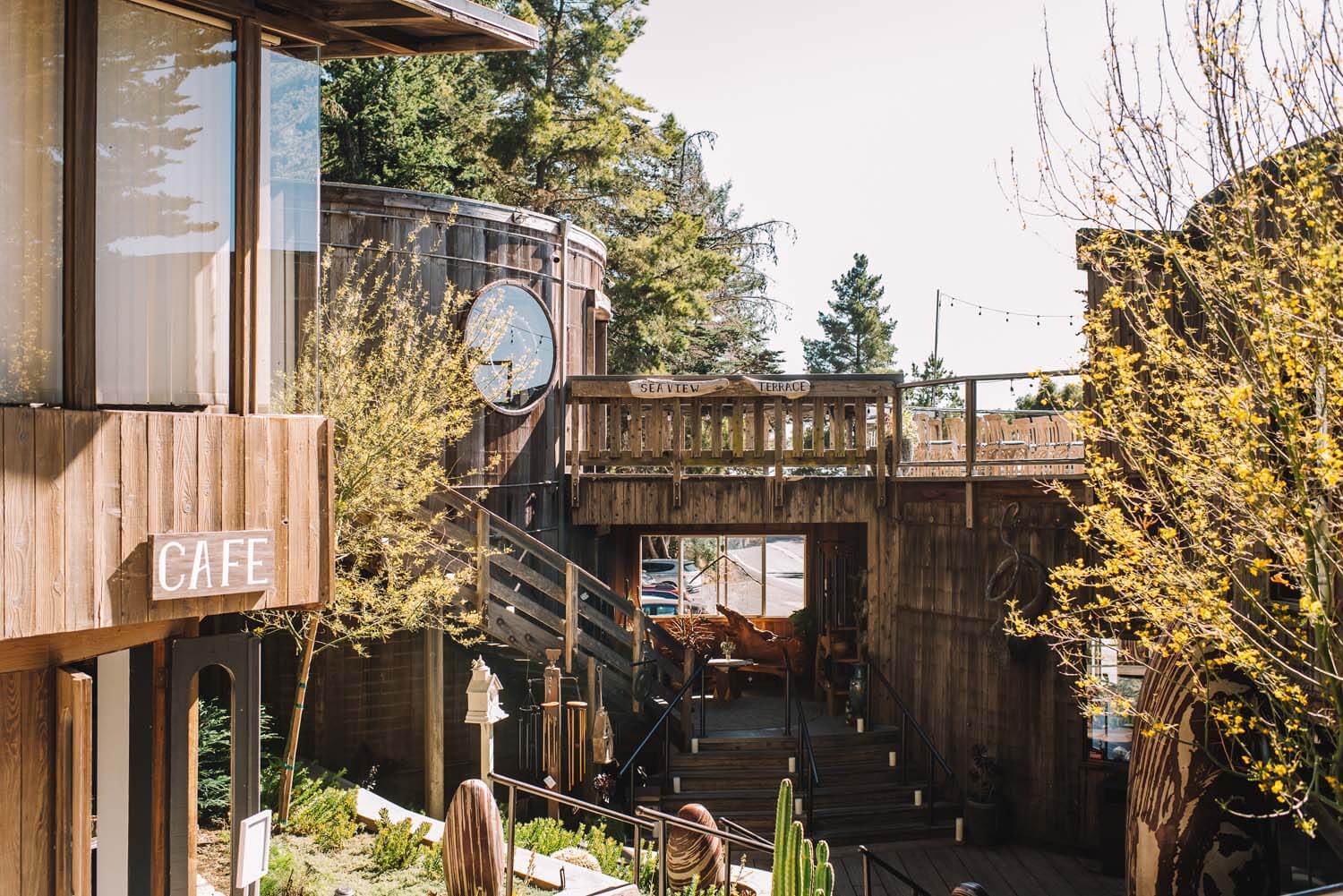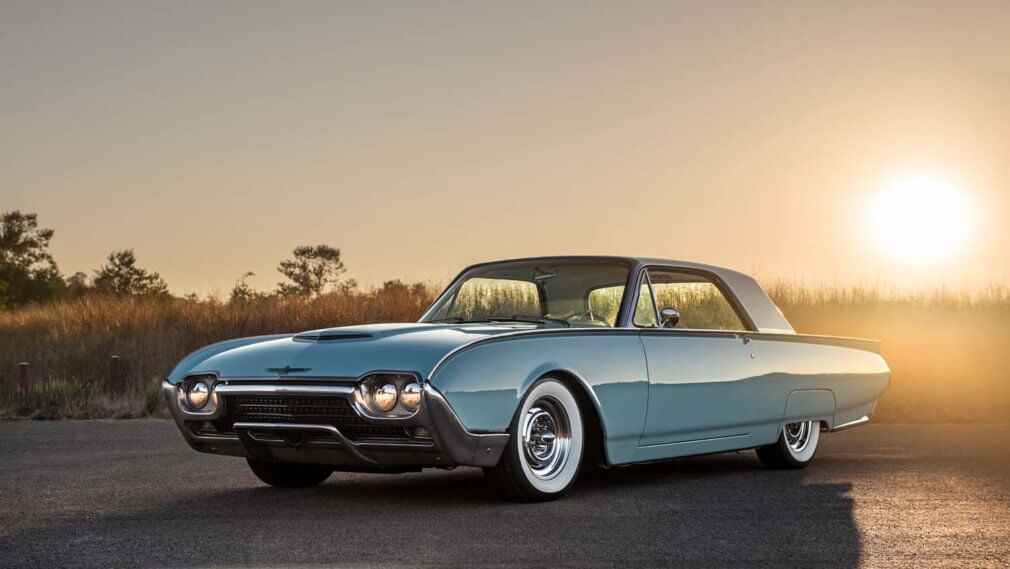Perched along some of the world’s most incredible coastline, California’s Highway 1 is a far cry from the concrete overpasses and smoke-belching 18-wheelers of more mundane highway travel. No, this scenic, multi-part stretch of pavement extends 656 miles, from luxurious Dana Point at the southern end to sparsely populated Leggett among towering redwoods to the north.
 Perhaps the most rugged, and challenging, section of Highway 1 is the 91-mile segment from San Simeon (home of Heart Castle) to Carmel-by-the-Sea. With severe cliffs and curves, jaw-dropping vistas and everything from summer fog to whale spouts, picturesque beaches and historical landmarks, it’s considered one of the world’s most scenic drives. Built between 1919 and 1937, for decades the Big Sur section of Highway 1 has been a one-of-a-kind tourist destination and home to some of the Golden State’s most charming and unique attractions. One of the highway’s most beloved adornments is the newly renovated COAST Big Sur, a gallery and café that has yet again reinvented itself amidst changes in the landscape it calls home.
Perhaps the most rugged, and challenging, section of Highway 1 is the 91-mile segment from San Simeon (home of Heart Castle) to Carmel-by-the-Sea. With severe cliffs and curves, jaw-dropping vistas and everything from summer fog to whale spouts, picturesque beaches and historical landmarks, it’s considered one of the world’s most scenic drives. Built between 1919 and 1937, for decades the Big Sur section of Highway 1 has been a one-of-a-kind tourist destination and home to some of the Golden State’s most charming and unique attractions. One of the highway’s most beloved adornments is the newly renovated COAST Big Sur, a gallery and café that has yet again reinvented itself amidst changes in the landscape it calls home.
 Formerly known as “The Bank,” the Coast Gallery opened its doors in 1958 as both a studio and exhibition space for artists and writers. These creative minds found refuge and inspiration in the natural beauty that surrounded them: the expansive Pacific Ocean to the west, the Santa Lucia Mountains to the east, and miles more of stunning coastline to the north and south. Such an environment was a welcome change from the unforgiving destruction of World War II—destruction that many of these artists and writers had witnessed firsthand. The Coast Gallery quickly became a community hotspot where locals would gather and connect, sharing their mutual love for Big Sur and its treasures. These early years of the gallery are often remembered with fondness, yet they were also marked by difficulty and financial struggle. By 1971, “The Bank,” despite its loving patronage, had fallen into disrepair and was soon put up for sale.
Formerly known as “The Bank,” the Coast Gallery opened its doors in 1958 as both a studio and exhibition space for artists and writers. These creative minds found refuge and inspiration in the natural beauty that surrounded them: the expansive Pacific Ocean to the west, the Santa Lucia Mountains to the east, and miles more of stunning coastline to the north and south. Such an environment was a welcome change from the unforgiving destruction of World War II—destruction that many of these artists and writers had witnessed firsthand. The Coast Gallery quickly became a community hotspot where locals would gather and connect, sharing their mutual love for Big Sur and its treasures. These early years of the gallery are often remembered with fondness, yet they were also marked by difficulty and financial struggle. By 1971, “The Bank,” despite its loving patronage, had fallen into disrepair and was soon put up for sale.
 An English professor-turned-candlemaker from Oregon named Gary Koeppel saw promise in the neglected gallery and purchased it that same year. Under Koeppel’s stewardship, the Coast Gallery was given new life, but such reinvention was in part a force of hand. A mere six months after Koeppel took ownership, an El Niño storm hit Big Sur, taking out 600 feet of the highway and causing a drainage culvert near the gallery to clog. The resulting flood nearly destroyed the building and necessitated a costly rebuild.
An English professor-turned-candlemaker from Oregon named Gary Koeppel saw promise in the neglected gallery and purchased it that same year. Under Koeppel’s stewardship, the Coast Gallery was given new life, but such reinvention was in part a force of hand. A mere six months after Koeppel took ownership, an El Niño storm hit Big Sur, taking out 600 feet of the highway and causing a drainage culvert near the gallery to clog. The resulting flood nearly destroyed the building and necessitated a costly rebuild.
 Given the financial constraints that come with such unexpected circumstances, resurrecting the beloved Big Sur attraction would be far from conventional. Koeppel found the answer to his dilemma in two 19-year-old redwood water tanks that had been retired by the Oak Naval Hospital. The tanks were constructed of three-inch-thick old-growth redwood planks and measured an expansive 34 feet in diameter. Their cylindrical shape and raw finish complemented the forested coastline, emulating the trunks of the trees and muted tones of the topography. The tanks were moved to the gallery’s location and converted into a usable space over the course of 18 months. Construction was completed in 1972 around the time of Highway 1’s reopening, meaning the new Coast Gallery was ready for business.
Given the financial constraints that come with such unexpected circumstances, resurrecting the beloved Big Sur attraction would be far from conventional. Koeppel found the answer to his dilemma in two 19-year-old redwood water tanks that had been retired by the Oak Naval Hospital. The tanks were constructed of three-inch-thick old-growth redwood planks and measured an expansive 34 feet in diameter. Their cylindrical shape and raw finish complemented the forested coastline, emulating the trunks of the trees and muted tones of the topography. The tanks were moved to the gallery’s location and converted into a usable space over the course of 18 months. Construction was completed in 1972 around the time of Highway 1’s reopening, meaning the new Coast Gallery was ready for business.
 The original two tanks were joined by a third in 1990, which also entailed the addition of a second story and a spiral staircase to connect the structures. In 1994, a deck was added to the top of the original tank, providing an outdoor seating area for what would become Coast Café. The four-acre property then had three galleries, three shops, the café and a 1,200-square-foot residence. Until 2015, it existed in the aforementioned configuration, but like all great works, there comes a time when the artist must walk away – for Koeppel, that time had come.
The original two tanks were joined by a third in 1990, which also entailed the addition of a second story and a spiral staircase to connect the structures. In 1994, a deck was added to the top of the original tank, providing an outdoor seating area for what would become Coast Café. The four-acre property then had three galleries, three shops, the café and a 1,200-square-foot residence. Until 2015, it existed in the aforementioned configuration, but like all great works, there comes a time when the artist must walk away – for Koeppel, that time had come.
 In 2016, the property was acquired by Peter and Merle Mullin, founders of the Mullin Automotive Museum in Oxnard, California. Long-time entrants at the Pebble Beach Concours d’ Elegance and part-time residents of Big Sur, the Mullins are no strangers to California’s Central Coast. Having visited the Coast Gallery numerous times over the years to admire the artwork and views, the Mullins could not pass up on the opportunity to purchase the iconic landmark when it was listed for sale.
In 2016, the property was acquired by Peter and Merle Mullin, founders of the Mullin Automotive Museum in Oxnard, California. Long-time entrants at the Pebble Beach Concours d’ Elegance and part-time residents of Big Sur, the Mullins are no strangers to California’s Central Coast. Having visited the Coast Gallery numerous times over the years to admire the artwork and views, the Mullins could not pass up on the opportunity to purchase the iconic landmark when it was listed for sale.
 In an instance of history repeating itself, shortly after the Mullins’ acquisition, an El Niño storm hit Big Sur and rock slides destroyed parts of Highway 1 to the north and south. The result was a partial closure of Big Sur for almost 18 months, which allowed the Mullins to complete their planned renovations at a time when business would already be impacted.
In an instance of history repeating itself, shortly after the Mullins’ acquisition, an El Niño storm hit Big Sur and rock slides destroyed parts of Highway 1 to the north and south. The result was a partial closure of Big Sur for almost 18 months, which allowed the Mullins to complete their planned renovations at a time when business would already be impacted.
 Big Sur architecture has long been a practice of complementing the landscape, a principle the existing water tanks already emulated. As a result, renovations were subtle with the goal of elevating, as opposed to changing, the existing structures. Renovations were largely limited to the interior of the property and incorporated staples such as exposed-beam walls, circular windows, stonework and redwood accents—all elements that allow nature to flow through the property, seemingly undisturbed.
Big Sur architecture has long been a practice of complementing the landscape, a principle the existing water tanks already emulated. As a result, renovations were subtle with the goal of elevating, as opposed to changing, the existing structures. Renovations were largely limited to the interior of the property and incorporated staples such as exposed-beam walls, circular windows, stonework and redwood accents—all elements that allow nature to flow through the property, seemingly undisturbed.
 The gallery and café reopened in March of 2019, now under the name of COAST Big Sur, ushering in the third chapter of its life on the rugged coast. Visitors will find an updated café, now with a beer and wine bar, gourmet coffee bar and picnic-inspired menu. Table-top gifts and one-of-a-kind accessories can be found in the shop, and an updated sea-view terrace with new seating but familiar ocean views offers visitors a fantastic location to enjoy their lunches, snacks or drinks. Familiar attractions, like the galleries which showcase artworks such as original prints from Henry Miller and Marc Chagall, have also been updated.
The gallery and café reopened in March of 2019, now under the name of COAST Big Sur, ushering in the third chapter of its life on the rugged coast. Visitors will find an updated café, now with a beer and wine bar, gourmet coffee bar and picnic-inspired menu. Table-top gifts and one-of-a-kind accessories can be found in the shop, and an updated sea-view terrace with new seating but familiar ocean views offers visitors a fantastic location to enjoy their lunches, snacks or drinks. Familiar attractions, like the galleries which showcase artworks such as original prints from Henry Miller and Marc Chagall, have also been updated.
 A trip down Historic Highway 1 is truly a drive more about the journey than the destination, but we recommend making a stop at COAST Big Sur along the way.
A trip down Historic Highway 1 is truly a drive more about the journey than the destination, but we recommend making a stop at COAST Big Sur along the way.
WORDS Noah Thanos | PHOTOS Ahava Studios & Kahn Media






